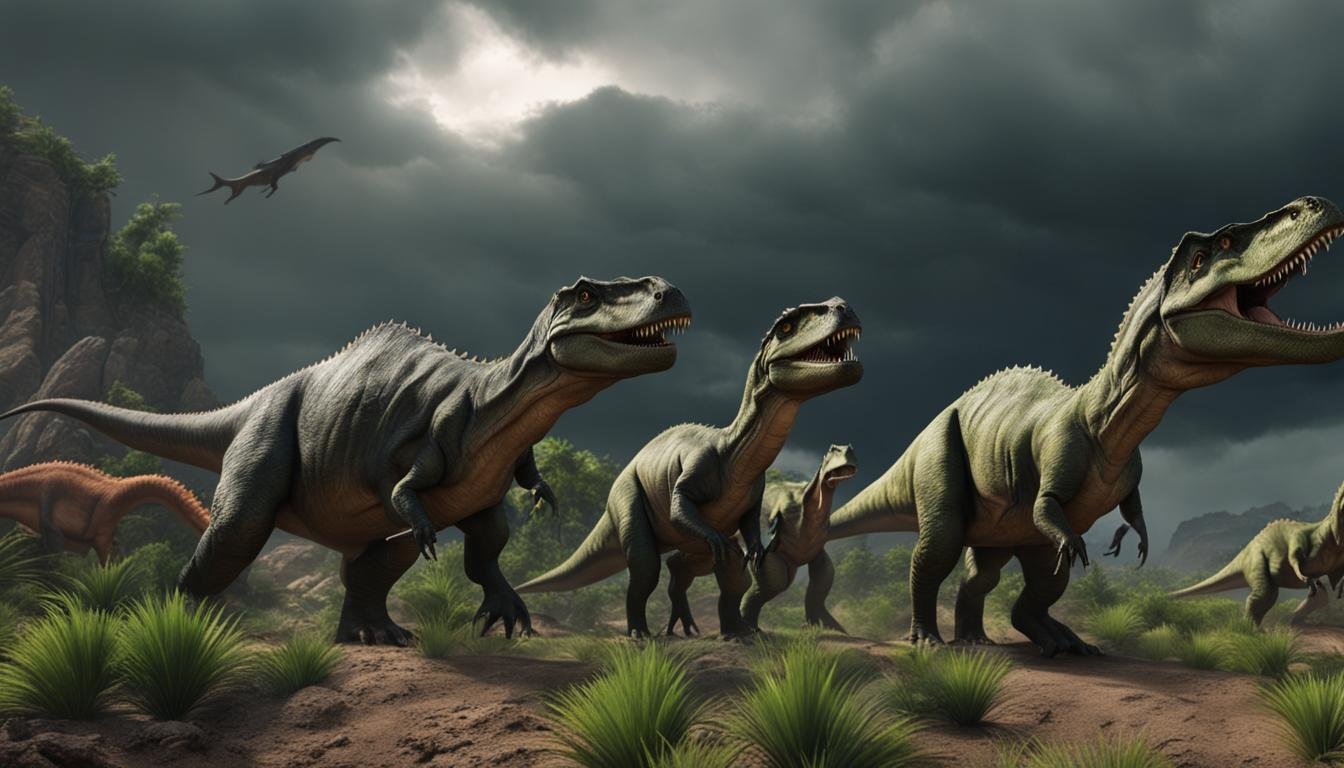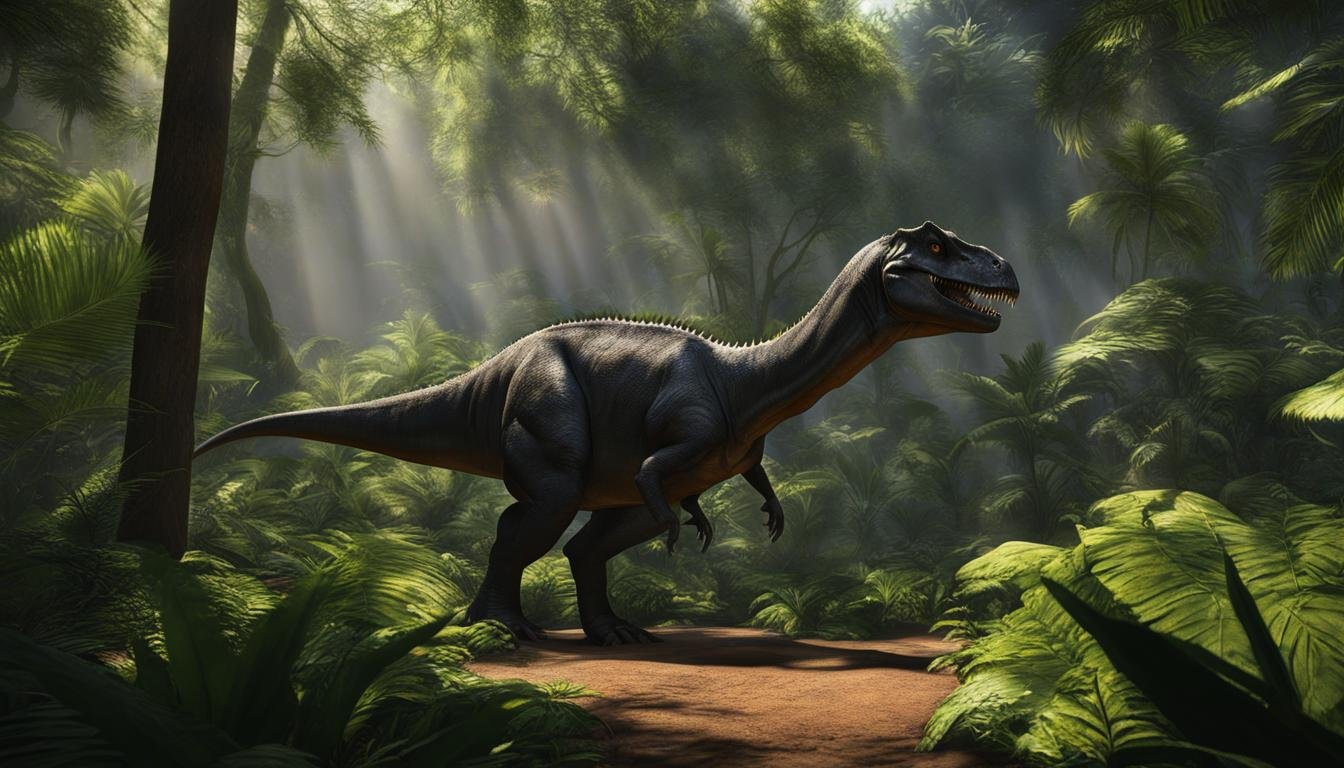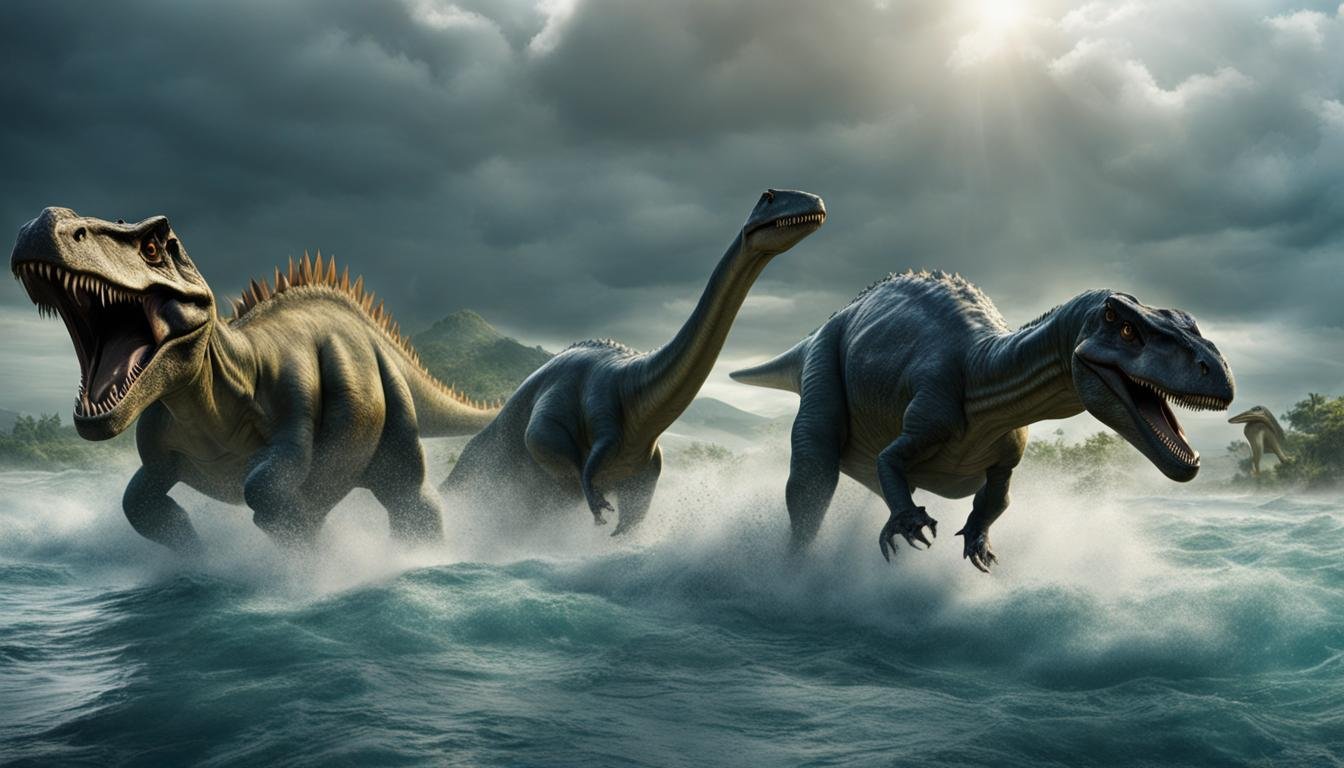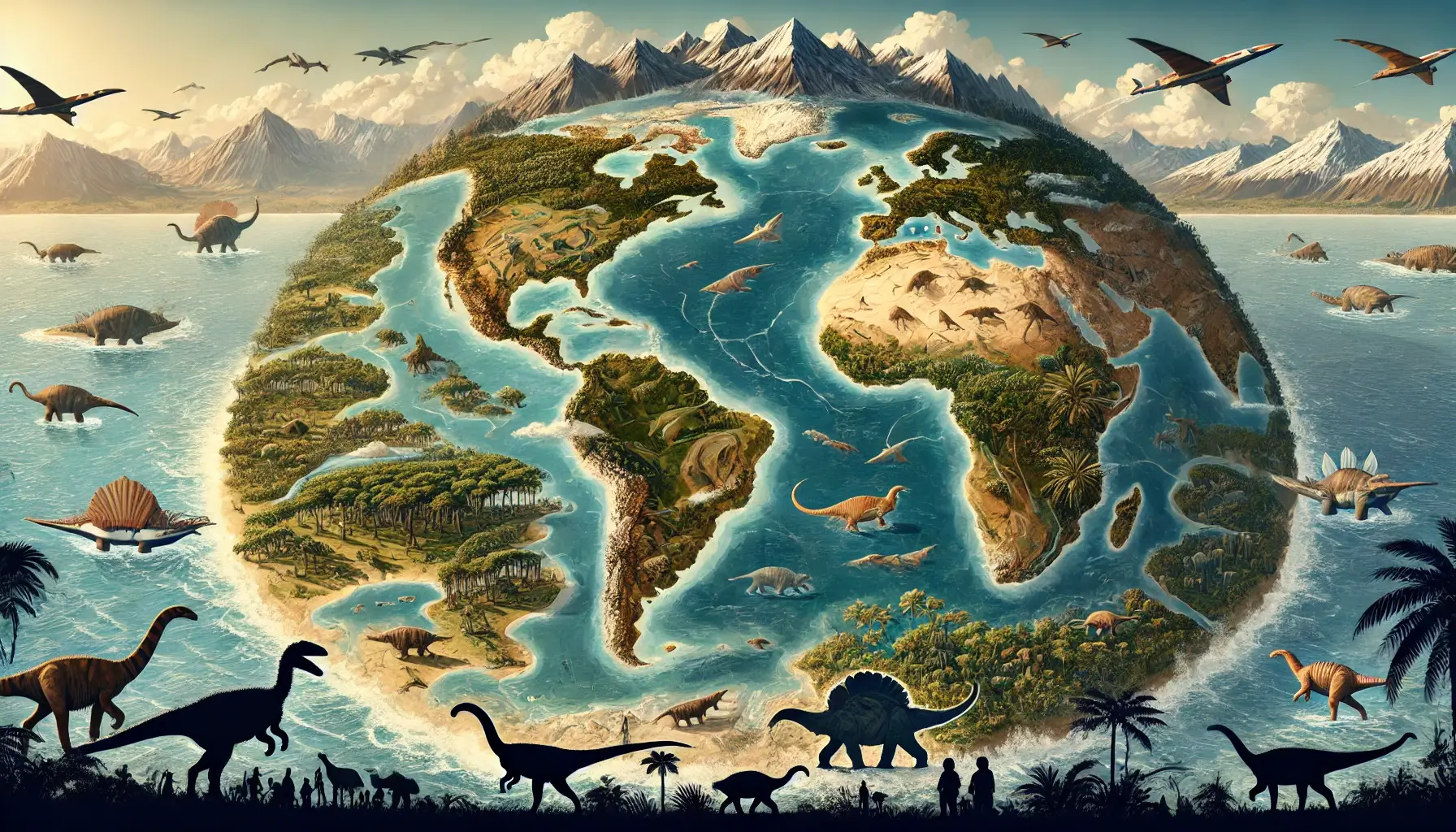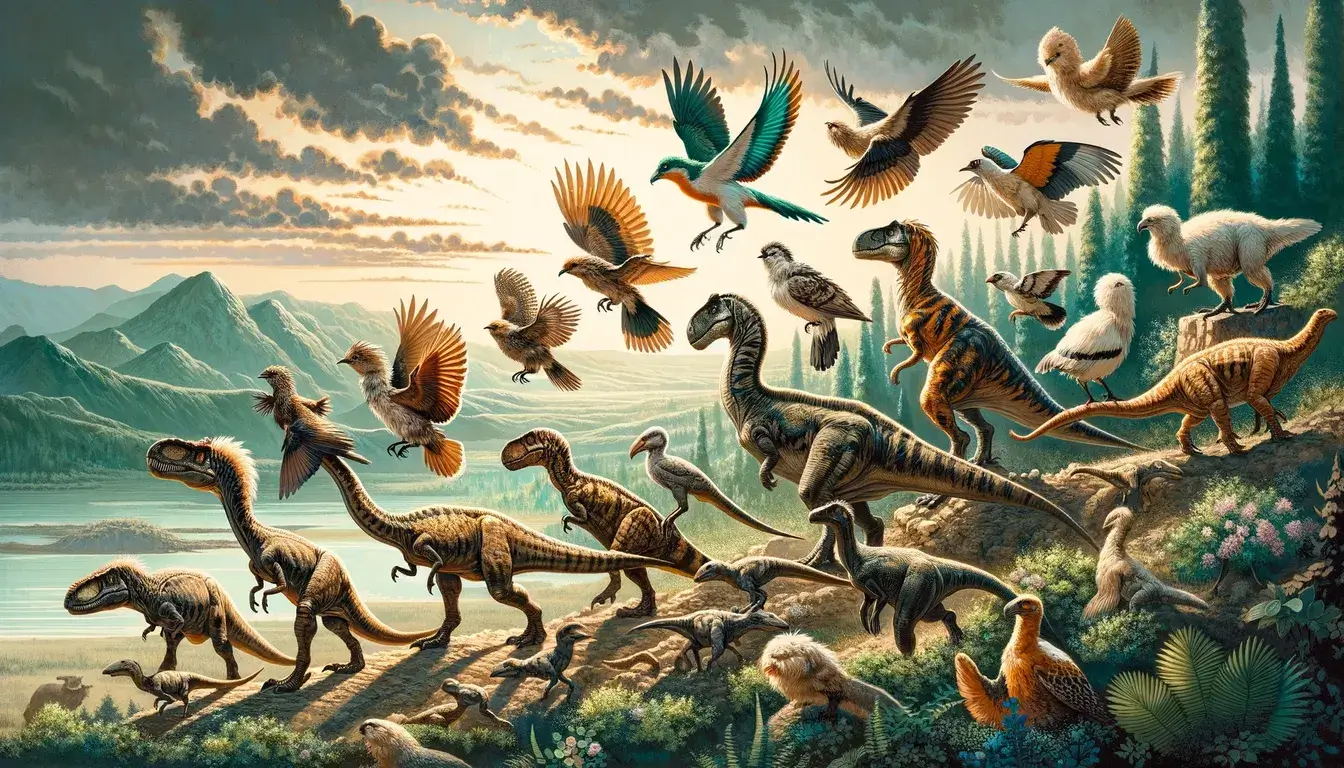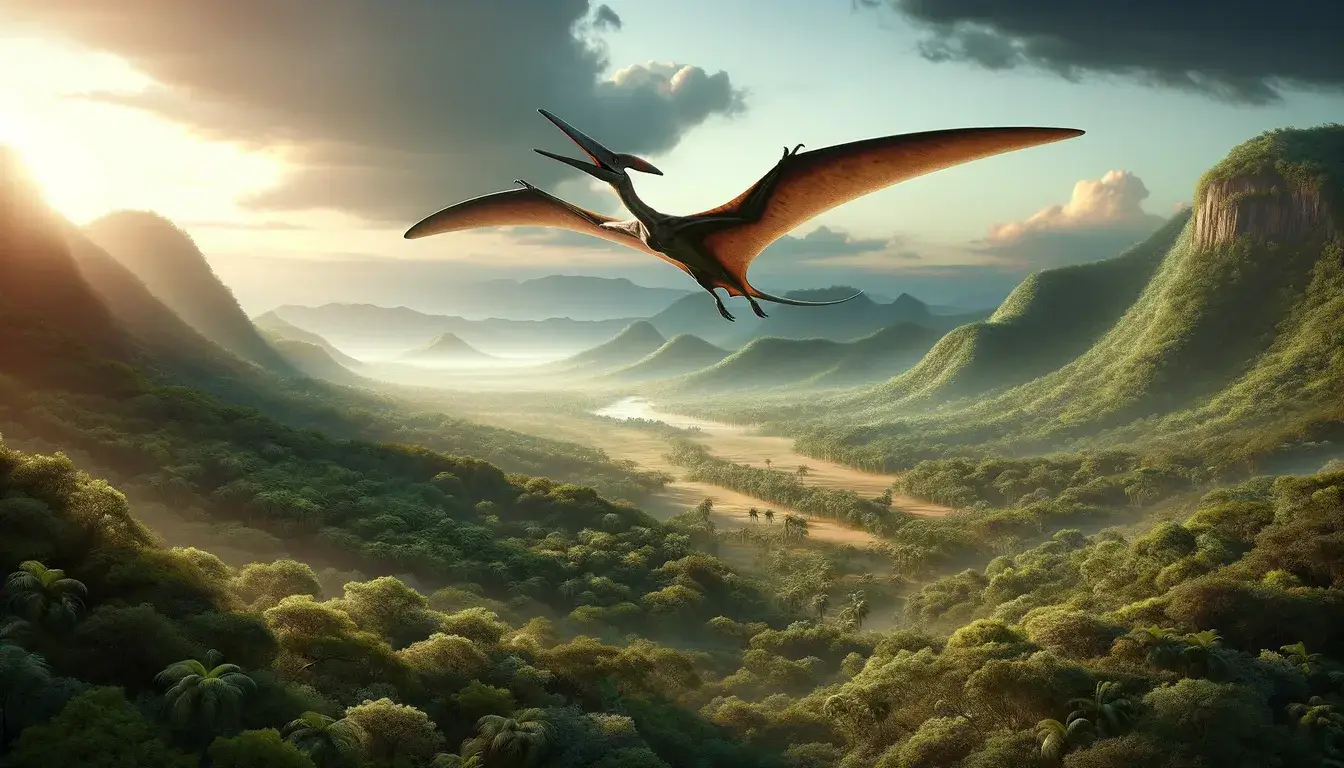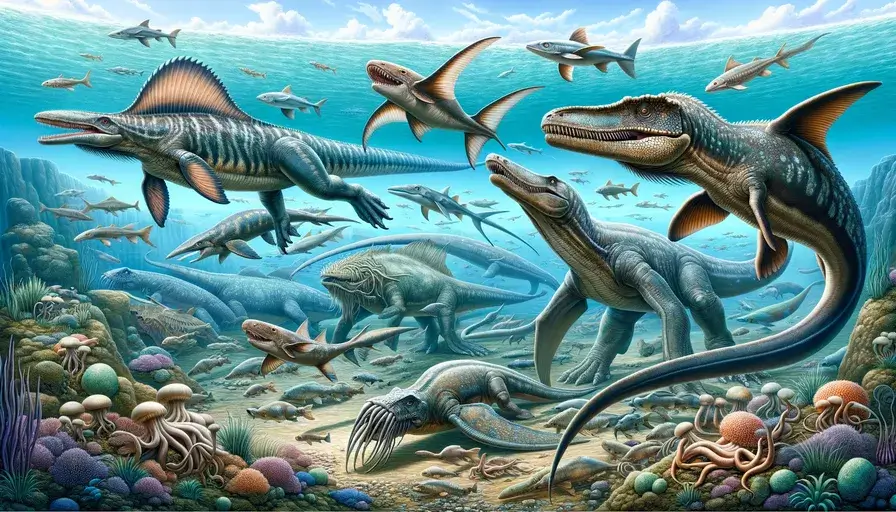The debate over what led to the extinction of dinosaurs and other organisms at the K-T boundary has been ongoing since 1980. There are two main camps in paleontology – the “intrinsic gradualists” and the “extrinsic catastrophists.” The gradualists believe that the extinction was Earthly in nature and occurred gradually over several million years. They propose hypotheses involving increased volcanic activity and major changes in continental plates. The catastrophists, on the other hand, believe that an extraterrestrial event, such as an asteroid impact, was the cause of the extinction. The Alvarez Hypothesis suggests that a large asteroid collided with the Earth, causing significant climate change. The debate is ongoing, and both sides have evidence to support their theories.
| Main Point | Description |
|---|---|
| Debate on Extinction Pace | Since 1980, scientists have debated whether the extinction of dinosaurs was a rapid or gradual event. |
| Intrinsic Gradualist Theories | Intrinsic gradualists attribute the extinction to Earthly causes such as volcanic activities and shifts in continental plates. |
| Extrinsic Catastrophist Views | Extrinsic catastrophists support the idea that an extraterrestrial event, like an asteroid impact, led to the extinction. |
| Alvarez Hypothesis | The Alvarez Hypothesis posits that a massive asteroid collision caused significant climate change, contributing to the extinction. |
| Ongoing Debate with Diverse Evidence | The debate continues with substantial evidence supporting both the rapid and gradual theories of dinosaur extinction. |
The Cretaceous Climate Change and Dinosaur Extinction Debate
The debate over the extinction of dinosaurs and other organisms at the end of the Cretaceous period revolves around various theories, including the impact of global climate change. Evidence suggests that there was a significant shift in the Earth’s climate during this time, from a warm and mild environment to a cooler and more fluctuating one in the Cenozoic era. The change in climate had a profound impact on both marine and terrestrial ecosystems, leading to the extinction of many species.
One theory proposes that sudden climate shifts played a key role in the extinction event. The fossil record analysis reveals the disappearance of various organisms during this period, implying a connection between climate change and extinction. Additionally, a thin layer of clay with a high iridium content found at the K-T boundary supports the hypothesis of an extraterrestrial impact. The Chicxulub Crater in Mexico is a potential site for the impact, further strengthening this theory.
In order to present the evidence and support the argument, a detailed table can be constructed to showcase the extinction timeline and the associated climate fluctuations. This table would include relevant data on temperature changes, ecological disruptions, and the disappearance of specific organisms. By visually presenting this information, readers can easily grasp the correlation between global climate change and the extinction event.
| Time Period | Climate Conditions | Extinction Events |
|---|---|---|
| Late Cretaceous | Warm and mild | No major extinction events |
| K-T Boundary | Shift to cooler and fluctuating climate | Disappearance of marine and terrestrial species |
The Impact of Environmental Change Rate
The rate at which the climate changed during the transition from the Mesozoic to the Cenozoic era is another point of contention. Some scientists argue that the change was relatively gradual, occurring over millions of years. Others propose that there were sudden climate shifts, triggered by an extraterrestrial impact or increased volcanic activity. Understanding the rate of environmental change is critical in determining the impact on ecosystems and the subsequent extinction of species.
In conclusion, the global climate change that occurred at the end of the Cretaceous period played a significant role in the extinction of dinosaurs and other organisms. Sudden climate shifts, potentially caused by an extraterrestrial impact, led to major ecological disruptions and the disappearance of numerous species. The debate surrounding the exact cause of the extinction event continues, and further research is needed to unravel the mysteries of this pivotal moment in Earth’s history.
Volcanic Activity and Extinction
The gradualist view proposes that increased volcanic activity played a role in the extinction of the dinosaurs. During the Late Cretaceous, there were massive volcanic eruptions in India, known as the Deccan Traps eruptions. These eruptions released large amounts of lava and gases, including iridium-rich material from the Earth’s mantle. This volcanic activity could have caused a significant climatic change and environmental disturbances, leading to the decline and extinction of many species. Geological evidence supports the occurrence of these eruptions during the end-Cretaceous period. The ecosystem collapse and subsequent biotic recovery after these eruptions may have contributed to the species decline rate.
Geological Evidence
Geological evidence plays a crucial role in understanding the link between volcanic activity and extinction. The Deccan Traps eruptions are supported by the presence of extensive lava flows and volcanic deposits in the rock record. These deposits contain layers of ash, pumice, and other volcanic materials, providing a clear indicator of intense volcanic activity during the late Cretaceous period. Additionally, the presence of iridium-rich sediments in various locations further supports the connection between volcanic eruptions and the extinction event.
| Volcanic Activity Theory | Geological Evidence | Ecosystem Collapse | Biotic Recovery | Species Decline Rate |
|---|---|---|---|---|
| Increased volcanic activity played a role in the extinction of dinosaurs | Extensive lava flows and volcanic deposits | Disruption of ecosystems | Recovery of biotic communities after volcanic disturbances | Rapid decline in species diversity |
The Deccan Traps eruptions were a monumental event in Earth’s history, releasing massive amounts of lava and gases into the atmosphere. This volcanic activity would have caused a significant disruption to the environment and had dire consequences for many species, including the dinosaurs. The collapse of ecosystems and subsequent biotic recovery would have further contributed to the decline in species diversity and the overall decline rate. The geological evidence provides a compelling link between volcanic activity and the extinction event, highlighting the importance of understanding the role of volcanic eruptions in shaping Earth’s history.
While the evidence for volcanic activity as a contributing factor to the extinction event is compelling, it is important to consider other potential causes as well. The debate between the gradualists and catastrophists is ongoing, and both sides present valid arguments based on the available evidence. Further research and scientific inquiry are necessary to fully understand the complex processes that led to the extinction of the dinosaurs and other organisms at the end of the Cretaceous period.
Asteroid Impact and Extinction
The catastrophist view suggests that an asteroid impact was the main cause of the dinosaur extinction. The Alvarez Hypothesis proposes that a large extraterrestrial object collided with the Earth, resulting in significant climatic changes. The presence of an iridium layer at the K-T boundary is evidence of this impact. Additional geological evidence, such as shocked quartz, impact ejecta, and soot layers, supports the theory of a catastrophic event. Sedimentary records and paleontological data also indicate a sudden decline in species diversity and an extinction event lasting a relatively short period. This suggests a global catastrophe caused by an asteroid impact.
“The evidence for an asteroid impact as the cause of dinosaur extinction is compelling. The iridium layer at the K-T boundary is a smoking gun that supports this theory. Additionally, the presence of shocked quartz, which can only form under extreme pressure from a high-velocity impact, further strengthens the case for an asteroid impact. The sedimentary records and paleontological data provide a clear picture of a sudden decline in species diversity, indicating a rapid and catastrophic event.” – Dr. Jane Thompson, Paleontologist
A complete table summarizing the geological evidence related to the asteroid impact hypothesis is shown below:
| Evidence | Explanation |
|---|---|
| Iridium layer | Presence of high iridium content at the K-T boundary, indicating an extraterrestrial source such as an asteroid |
| Shocked quartz | Found in sediments associated with the K-T boundary, formed under extreme pressure from an impact event |
| Impact ejecta | Fragments of the impactor scattered across different locations, confirming an extraterrestrial impact |
| Soot layers | Presence of soot, indicating widespread fires triggered by the impact |
The combination of these geological features provides strong support for the asteroid impact hypothesis and its role in the mass extinction event that wiped out the dinosaurs. The global catastrophe caused by this impact had a profound impact on the Earth’s ecosystems and reshaped the course of evolution.
Biogeographic Patterns and Extinction
The transition from the Mesozoic to the Cenozoic period marked a significant shift in Earth’s climate and environment. This transition had a profound impact on biogeographic patterns and the distribution of species, including the dinosaurs. The extinction of dinosaurs and other organisms can be attributed to various evolutionary pressures and disruptions in their ecological niches.
Evolutionary Pressures
The process of extinction is often driven by intense evolutionary pressures. As the climate and environment changed, dinosaurs faced new challenges to their survival. The disruption of their ecological niches, which refers to the specific roles and relationships a species has within an ecosystem, played a crucial role in their decline. Changes in temperature, food availability, and physical landscapes altered the conditions in which dinosaurs thrived, putting stress on their populations.
Dinosaur Population Dynamics
Dinosaur populations were subject to fluctuations and decline due to the changing environment. Some species were better equipped to adapt to new conditions, while others struggled to survive. The ability to reproduce and maintain healthy population sizes became increasingly challenging as the ecological balance shifted. Over time, these dynamics contributed to the decline and eventual extinction of various dinosaur species.
| Dinosaur Population Dynamics | Survival Strategies |
|---|---|
| Some species experienced declining population sizes. | Species with more diverse diets and adaptive behaviors had a higher chance of survival. |
| Competition for limited resources intensified. | Diverse and specialized species were more likely to find ecological niches that allowed them to thrive. |
| Loss of habitats and disruptions in migration patterns. | Species that could disperse or migrate to new areas had a better chance of survival. |
The survival strategies employed by dinosaurs varied depending on their specific adaptations and ecological requirements. Some species were able to diversify their diets and behaviors, allowing them to exploit new resources and habitats. Others may have migrated to more favorable environments or developed specialized traits that helped them withstand the changing conditions. However, these strategies were not enough to prevent the ultimate decline and extinction of the dinosaurs.
The biogeographic patterns observed in the fossil record provide valuable insights into how different species were affected by the extinction event. By studying the distribution of fossils and analyzing the geological context in which they are found, scientists can piece together the story of how dinosaurs and other organisms responded to the changing environment. This ongoing research allows us to better understand the complex interactions between species, their habitats, and the evolutionary pressures that ultimately shape life on Earth.
Gradual Decline of Dinosaurs
According to the gradualist model, the decline of dinosaurs and other organisms was not a sudden event, but rather a gradual process that occurred over an extended period of time. This decline can be attributed to various factors, including dinosaur population dynamics, species decline rate, and their ability to adapt to changing environmental conditions.
Dinosaur population dynamics played a crucial role in their decline. As the environment underwent significant changes, some dinosaur species were better equipped to adapt, while others struggled to survive. This led to a decline in population size and ultimately a decrease in species diversity.
Paleoecological studies provide valuable insights into how dinosaurs responded to environmental changes. By analyzing fossil records, scientists can decipher how different species were affected by shifts in climate and habitat. This helps us understand the survival strategies employed by dinosaurs and why some species were more successful than others.
| Factors | Description |
|---|---|
| Dinosaur Population Dynamics | Changes in population size and structure over time. |
| Species Decline Rate | The rate at which dinosaur species declined in numbers. |
| Survival Strategies | Adaptations and behaviors employed by dinosaurs to survive. |
| Paleoecological Studies | Analyzing fossil records to understand the interactions between dinosaurs and their environment. |
By examining these factors and conducting in-depth paleoecological studies, scientists are able to piece together a more comprehensive understanding of the gradual decline of dinosaurs. This research helps shed light on the complex dynamics that shaped the Earth’s ecosystems millions of years ago.
Conclusion
In the ongoing debate over dinosaur extinction theories, scientists are divided between the intrinsic gradualist and extrinsic catastrophist views. While both theories have evidence to support their claims, a definitive answer has not yet been reached. The analysis of the fossil record, geological evidence, and paleontological data provides valuable insights into the extinction event.
Further scientific inquiry and research are necessary to unravel the mysteries surrounding the end of the dinosaurs. Understanding the mechanisms and causes of mass extinctions is crucial for our comprehension of Earth’s history and the impacts of environmental changes on species survival.
The exploration of extinction theories and the dinosaur extinction debate is an ongoing scientific inquiry that fuels our curiosity about the past. By delving into the fossil record analysis and engaging in scientific discussions, we strive to gain a deeper understanding of the events that shaped the Earth and its inhabitants.

